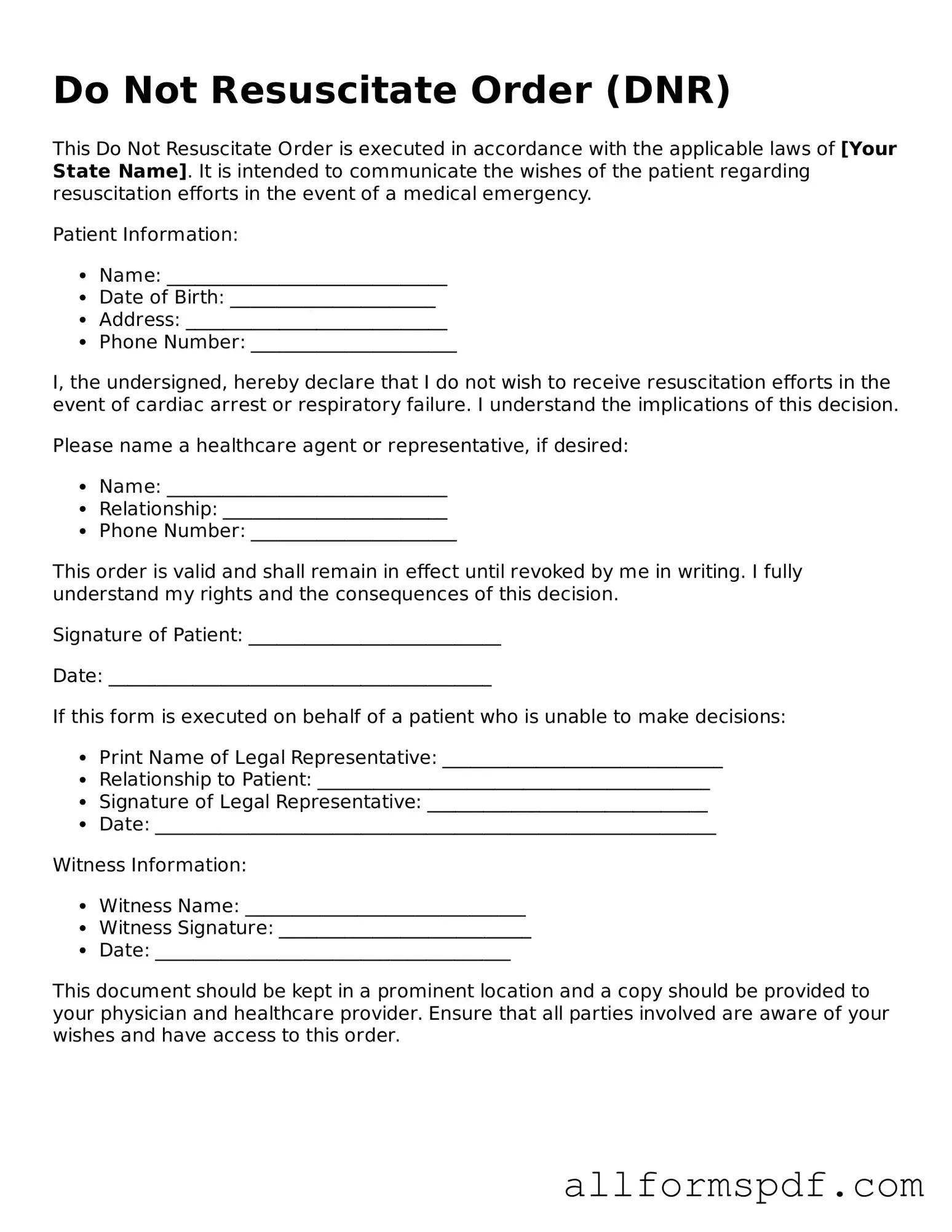Completing a Do Not Resuscitate (DNR) Order form is an important decision for individuals and their families. However, several common mistakes can occur during this process. Awareness of these errors can help ensure that the form accurately reflects the individual's wishes.
One common mistake is failing to discuss the DNR decision with family members or healthcare providers. Open communication is essential. Without it, misunderstandings may arise, leading to confusion during a medical emergency.
Another mistake involves not understanding the implications of the DNR order. Some individuals may not fully grasp what a DNR means in terms of medical treatment. They might assume it only applies to certain situations, when in fact it is a comprehensive directive regarding resuscitation efforts.
Inaccurate or incomplete information on the form can also pose significant issues. For example, if a person's name, date of birth, or other identifying details are incorrect, it may lead to complications when the order needs to be enacted. Ensuring all information is accurate is crucial.
Additionally, individuals sometimes neglect to sign and date the form. A DNR order must be properly executed to be valid. Without a signature or date, the order may not be recognized by medical personnel.
Some people may mistakenly believe that a DNR order is permanent and cannot be changed. In reality, individuals can update or revoke their DNR orders at any time. Failing to recognize this flexibility can lead to decisions that no longer reflect a person's current wishes.
Finally, individuals may not keep copies of the DNR order in accessible locations. It is important to provide copies to healthcare providers, family members, and any relevant medical facilities. Without easy access to the order, there may be delays in honoring the individual's wishes during a critical time.
